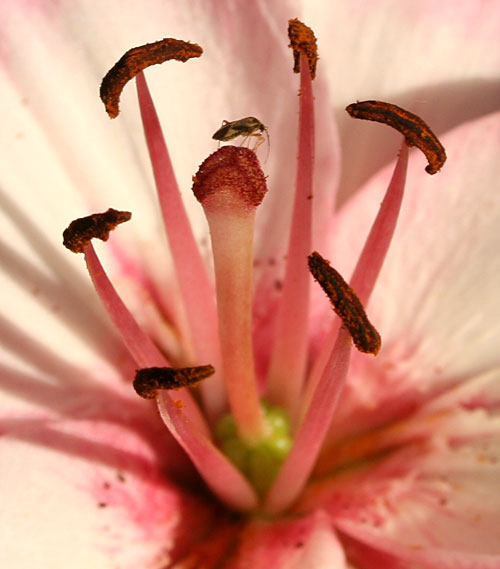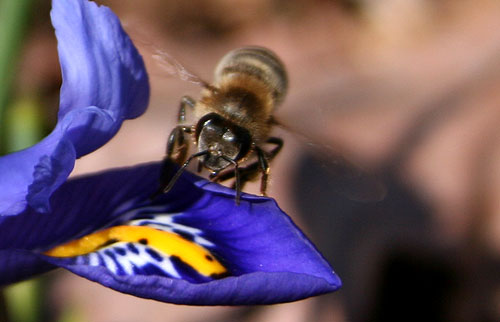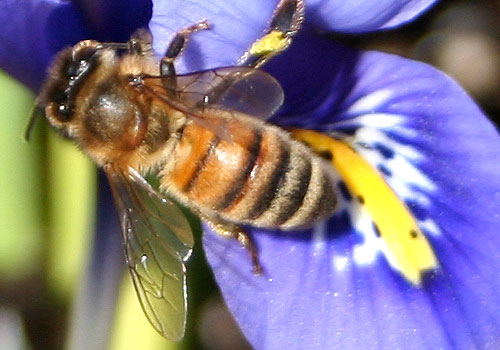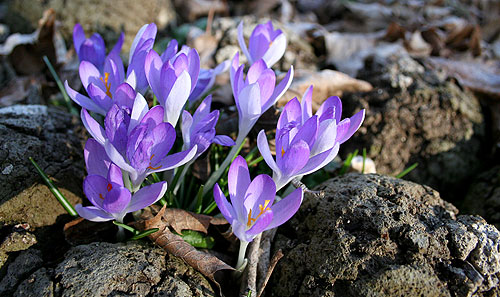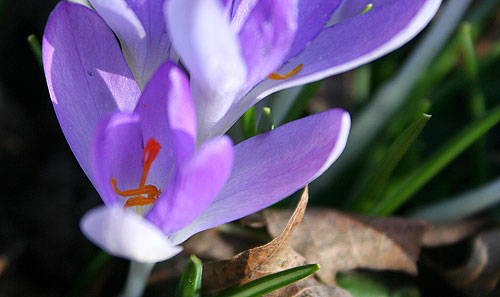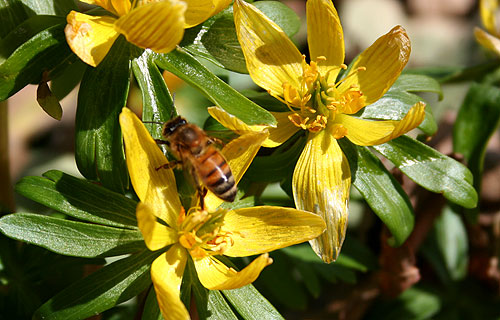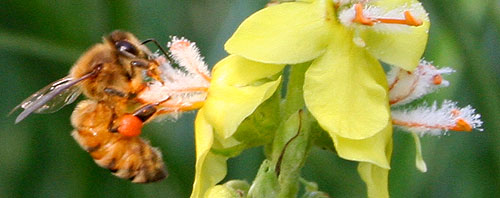Richard Louv webcast. Louv, best-selling author, chairman of the Children & Nature Network, columnist, & recipient of the 2008 Audubon Medal will speak on Last Child in the Woods: Saving our Children from Nature-Deficit Disorder as part of the Cornell Plantations lecture series, 7:30 p.m. Eastern, Sept. 24. The event is sold out, but you can watch the live webcast. I’m pretty sure that the lecture will be archived and will post a link when it’s available.
Check out this temporary park in Collegetown created by landscape architecture students. The one-day event was sponsored by The Trust for Public Land and celebrated parks by creating temporary parks in public places.
Durand Van Doren, local metal artist extraorinaire, gave a great talk at the ACNARGS meeting Saturday. Too bad the weather was so nice and attendance was sparse. He told me that he’s due to install the remaining two gates on the north and south sides of Minns Garden this fall. I’ll have pictures when he does.
Ladybug, ladybug, where have you gone? Another Ithaca Journal article about a citizen science project involving gardeners, students and others to find “the once-ubiquitous beetles entomologists call Coccinella novemnotata — or C-9, for short.” It’s our state insect here in New York, but was last collected here in 1970, having been displaced by alien ladybug species that have a penchant for coming inside over winter.
 High-angle pix – When I was shooting the new sod sculpture at Bluegrass Lane last week, I thought I was doing good to get a high-angle shot from a lift on the turf crew’s utility vehicle.
High-angle pix – When I was shooting the new sod sculpture at Bluegrass Lane last week, I thought I was doing good to get a high-angle shot from a lift on the turf crew’s utility vehicle.
But while I was out there, I met Bob Chiang, the father of one of the students who did me one better when it comes to high-angle shots. Bob rigs gas-powered model airplanes with digital cameras to get really high-angle shots. But at this shoot, he was experimenting for the first time with a camera mounted on a telescoping 25-foot survey pole. Shooting blind, I think the results were quite good. If I were a professional garden photographer, I’d rush right out and get one of these so that I could get a ‘second-story shot’ from anywhere. Check out Bob’s Landmark Images photo galleries for some great shots of the area from his model airplane.





